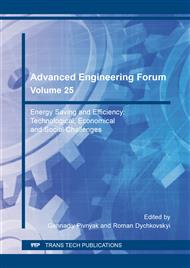p.1
p.11
p.20
p.28
p.35
p.43
p.54
p.64
Some Aspects of Energy Efficient Project Management
Abstract:
According to energy-saving trends the use of all types of energy should be minimal and efficient. Since late 90-s such strategy has been already used in well-developed countries. In Ukraine the energy-saving measures became popular since 2014. Now it is possible to receive warm loans supported by Ukrainian government for private households and co-owners of multi-apartment buildings. Also, it is possible to apply for grants of the Ministry of Regional Development, Construction and Housing and Communal Services of Ukraine – the regional development projects that can be implemented at the expense of the state budget received from the European Union or other grants financed by local authorities at different levels. According to statistics it was found that using thermal sanitation method as a key measure of energy saving, it is possible to provide 85% of insulation efficiency. The research is focused on determination of weaknesses concerning grants for energy efficiency, their application and management. One of the most important factor that influence overall success is the correct calculation of energy losses. Three possible types of errors during calculations and possibilities to reduce their influence were defined. At the end of the article conclusions and suggestions for further research were made.
Info:
Periodical:
Pages:
20-27
Citation:
Online since:
November 2017
Authors:
Price:
Сopyright:
© 2017 Trans Tech Publications Ltd. All Rights Reserved
Share:
Citation:


